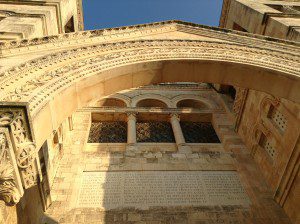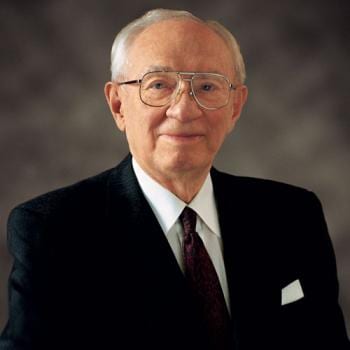
As part of the New Testament Commentary Seminar, a conference will be held at BYU Friday July 29. A formal announcement, more information, and audio/video from previous conferences are available here at the Commentary homepage. Click here for a nice PDF.
4th Annual BYU New Testament Commentary Conference:
New Mormon Ideas about Mark and Hebrews
Friday, July 29
9:00 am to 3:00 pm
Hinckley Center Assembly Hall, Brigham Young University
Public welcome, Admission free
The Epistle to the Hebrews
9:00 Welcome, Invocation, and Introductions
9:10 Michael Rhodes, “Thoughts on the Authorship of the Epistle to the Hebrews”
9:45 Joshua M. Matson, “‘Whoso Readeth It, Let Him Understand’: The Use of Extra-Canonical Jewish Traditions in Hebrews”
10:05 Q&A on the Authorship of Hebrews
10:15 Richard Draper, “‘Now Since the Children Share Flesh and Blood, [Christ] also, in Just the Same Way, Shared Their Humanity’: The Low Christology of the Lord as Viewed in Hebrews 1–2”
10:50 Avram R. Shannon, “‘I Have Sworn’: Ancient Exegesis and the Oath and Covenant of the Priesthood”
11:10 Ben Spackman, “Joseph Smith, JST Hebrews 9:15-20, and Covenant Curses”
11:30 Nathaniel Pribil and Chris Brockman, “The Many Uses of Hebrews by LDS Leaders”
11:50 Q&A on Main Themes of Hebrews
12:00 Lunch Break
The Gospel of Mark
1:00 Reconvene
1:10 Julie M. Smith, “The Purpose of Parables: A Closer Look at Mark 4:10-13”
1:45 Andrea Brunken, “Messianic Secret in the Book of Mark”
2:05 Philip Abbott, “The Markan Sandwich of Mark 5: A Reflection of Christ”
2:25 Andy Mickelson, “‘[He] Fled from Them Naked’: Uncovering the Significance of Mark 14:51-52”
2:45 Q&A on LDS Interests and Perplexities in Mark
2:55 Closing and Benediction
I’ve had an interest in my topic for years, and am glad for the opportunity to have to actually do the work. In essence, Hebrews 9:15-20 uses Gr. diatheke as a leitwort, but does it mean “last will, testament” per Classical Greek, or “covenant” per Septuagint Greek? Is it playing on both meanings? (You can see some of the problems explained here.) Regardless of how the Greek should be understood, Joseph Smith made some interesting changes to the JST.
15 And for this cause he is the mediator of the new
testamentcovenant, that by means of death, for the redemption of the transgressions that were under the firsttestamentcovenant, they which are called might receive the promise of eternal inheritance.16 For where a
testamentcovenant is, there must also of necessity be the death of thetestatorvictim.17 For a
testamentcovenant is of force after men are dead: otherwise it is of no strength at all while thetestatorvictim liveth.18 Whereupon neither the first
testamentcovenant was dedicated without blood.19 For when Moses had spoken every precept to all the people according to the law, he took the blood of calves and of goats, with water, and scarlet wool, and hyssop, and sprinkled both the book, and all the people,
20 Saying, This is the blood of the
testamentcovenant which God hath enjoined unto you.
These changes both pick a side in the will/covenant argument but also tie it more closely back to Exodus 24 (quoted in v.20 above), wherein the covenant of the Torah is put into force. Moses declares the covenantal requirements of Torah, the people verbally bind themselves to it, there’s some strange ritual, and lo, the covenant is in force.
3 ¶Moses… told the people all the words of the Lord, and all the judgments: and all the people answered with one voice, and said, “All the words which the Lord hath said will we do.”
4 And Moses wrote all the words of the Lord, and rose up early in the morning, and built an altar at the bottom of the mount, and twelve pillars, according to the twelve tribes of Israel.
5 And he sent young men of the children of Israel, who offered burnt offerings, and sacrificed peace offerings of oxen unto the Lord.
6 And Moses took half of the blood, and put it in basins; and half of the blood he sprinkled on the altar.
7 And he took the book of the covenant, and read in the audience of the people: and they said, All that the Lord hath said will we do, and be obedient.
8 And Moses took the blood, and sprinkled it on the people, and said, Behold the blood of the covenant, which the Lord hath made with you concerning all these words.
Part of that ritual involves collecting the blood from a ritual sacrifice (which likely means the animals had their throats cut, in order to collect it) and sprinkling it on the altar and on the people to ratify the covenant and also symbolize, as a simile curse, the fate of the people if they reject or violate the covenant. (That sprinkled blood is called “the blood of the covenant” and it is this phrase that Jesus uses when transforming the wine of the last supper into the Christian sacrament. “This is my blood of the new covenant.”) Regardless of what the Greek means, the JST shows that Joseph Smith knew… something about covenantal structures and curses when he did this part of the JST in 1830(?).
That’s my topic.
As always, you can help me pay my tuition here, or you can support my work through making your regular Amazon purchases through this Amazon link. You can also get updates by email whenever a post goes up (subscription box on the right). If you friend me on Facebook, please drop me a note telling me you’re a reader. I tend not to accept friend requests from people I’m not acquainted with.











